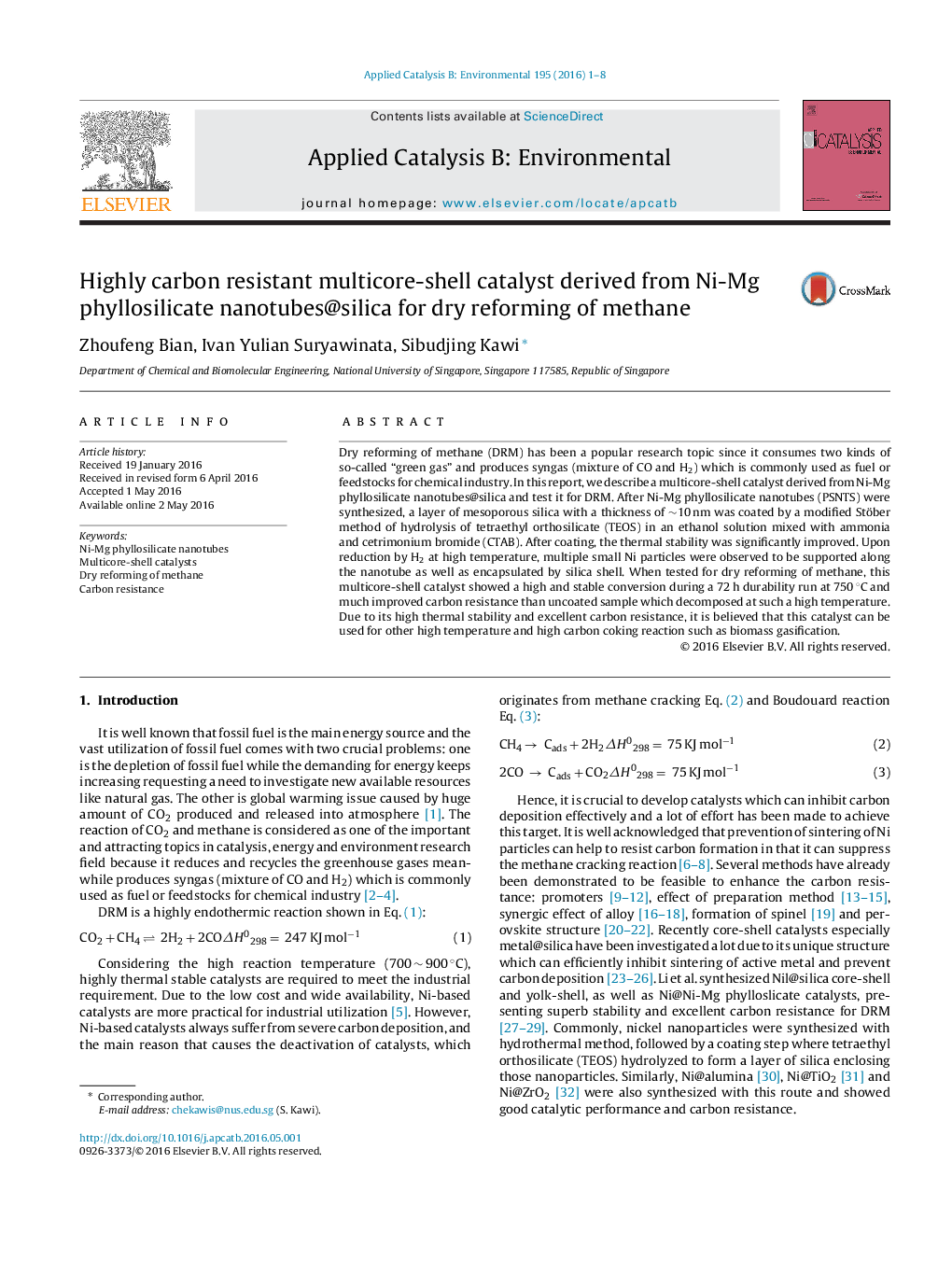| Article ID | Journal | Published Year | Pages | File Type |
|---|---|---|---|---|
| 44763 | Applied Catalysis B: Environmental | 2016 | 8 Pages |
•Multicore-shell catalyst was obtained via silica coating of Ni-Mg phyllosilicate nanotubes.•This Multicore-shell catalyst showed high and stable DRM activity.•The silica shell helps to improve the thermal stability and inhibit carbon formation.
Dry reforming of methane (DRM) has been a popular research topic since it consumes two kinds of so-called “green gas” and produces syngas (mixture of CO and H2) which is commonly used as fuel or feedstocks for chemical industry. In this report, we describe a multicore-shell catalyst derived from Ni-Mg phyllosilicate nanotubes@silica and test it for DRM. After Ni-Mg phyllosilicate nanotubes (PSNTS) were synthesized, a layer of mesoporous silica with a thickness of ∼10 nm was coated by a modified Stöber method of hydrolysis of tetraethyl orthosilicate (TEOS) in an ethanol solution mixed with ammonia and cetrimonium bromide (CTAB). After coating, the thermal stability was significantly improved. Upon reduction by H2 at high temperature, multiple small Ni particles were observed to be supported along the nanotube as well as encapsulated by silica shell. When tested for dry reforming of methane, this multicore-shell catalyst showed a high and stable conversion during a 72 h durability run at 750 °C and much improved carbon resistance than uncoated sample which decomposed at such a high temperature. Due to its high thermal stability and excellent carbon resistance, it is believed that this catalyst can be used for other high temperature and high carbon coking reaction such as biomass gasification.
Graphical abstractFigure optionsDownload full-size imageDownload as PowerPoint slide
